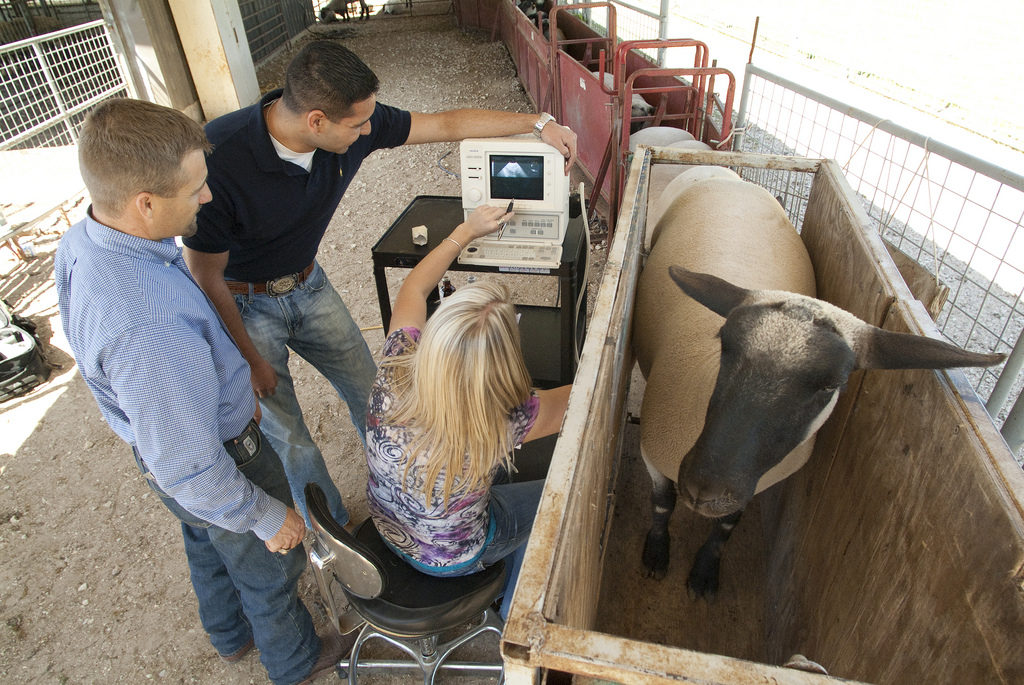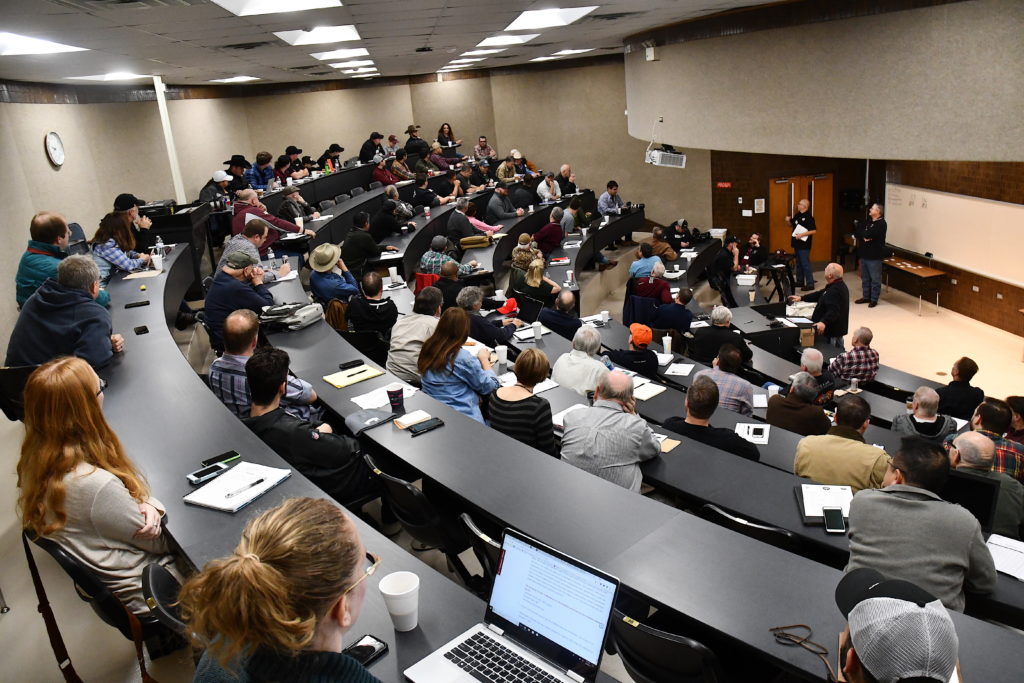Building a premier livestock research, education program
Texas A&M’s animal science department aims for international excellence
Texas A&M College of Agriculture and Life Sciences’ Department of Animal Science is already the largest animal science department in the U.S. with more than a thousand undergraduate students, but the department also has its sights set on becoming the top animal science department in the world.
The Department of Animal Science has created a roadmap for this success and has celebrated several milestones in 2020.
“We want to have nationally and internationally recognized researchers who are committed to teaching our students, offering the best educational opportunity around, and conducting impactful research,” said Cliff Lamb, Ph.D., who became department head three years ago. “We are making investments to reach this goal.”
Striving for five areas of excellence
For an industry and area of academic study with a plethora of immediate needs, the department has identified five areas of excellence where they will concentrate their efforts and ensure all advancements and technologies are disseminated to producers, students, industry professionals and the public.
– Cattle adapted to tropical and subtropical climates. Provide unparalleled leadership in beef production genetics, management and products through research advancements in physiology and genetics. The enhanced knowledge of reproductive efficiency, genetic improvement, nutritional management and immunological function will increase production. Also, the impacts of these factors upon nutrition, palatability, yield, safety and consumption of beef are significant areas of investigation.
– Quantifiable animal performance. Create and utilize novel models and critical metrics for evaluation and assessment of animal performance across species and disciplines. Providing subject matter expertise within quantifiable animal performance will improve efficiency and value associated with animals, animal products and the animal science industry. Application of developed models and metrics will generate data to help inform both public and industry perception and policy for a more sustainable livestock industry.

– Pregnancy and developmental programming. The focus is to enhance reproductive efficiencies and outcomes via increased understanding of mechanisms supporting embryonic survival, relationships between intra-uterine nutrition, immune function, neonatal survival and improved utilization of nutrients in livestock, as well as pre-and post-pubertal development and functionality.
– Safety, quality and nutrition of food products. Providing leadership in research, support and training in food safety, quality and nutrition as well as the relationship between these areas. Research will span production through processing, distribution and preparation by meat science faculty who are renowned experts in the areas of sensory and flavor chemistry, fatty acid biochemistry, fresh meat quality and food safety including antimicrobial applications and phage technology.
– Student and stakeholder engagement. The department is well suited to increase focus on discovery and innovation in the areas of pedagogy, student and stakeholder perceptions, high-impact learning programs, and international collaborations. This will impact not only Texas A&M students, but also individuals across the state, nation and world.
Faculty researchers
Lamb said the first step for the department was to hire faculty whose research and education focus fit its five areas of excellence.
“In the last three years, we have hired 14 new faculty. These faculty members are invested in building our research portfolio,” he said. “Our grant numbers over the past two years are higher than any other two years in the history of the department. We are also committed to enhancing the funding we are receiving from federal and state agencies.”
Lamb said the department faculty have received notice they were awarded more than $4.5 million in competitive grants from the U.S. Department of Agriculture since July 1.
More responsive research is another goal of the department’s research efforts. Immediate challenges facing the livestock industry in the area of safety, quality and nutrition of food products are increasing as evidenced by the grant-funded project led by Sapna Dass, Ph.D., a meat science research assistant professor. She quickly responded to a USDA call for solving problems with COVID-19 in the supply chain and received a $1 million grant.
A grant-funded project led by Tom Hairgrove, DVM and Ph.D., Texas A&M AgriLife Extension Service cattle veterinary specialist, demonstrates the commitment to stakeholder engagement. The grant to establish a rural veterinarian network will provide education and assistance with a goal of making rural veterinary practices sustainable while increasing producer profits through proactive measures.
More than a classroom
Texas A&M has the largest Department of Animal Science in the country, with an enrollment this year of 1,277 undergraduates. Lamb said they have updated their curriculum to ensure these students are meeting the needs of the industry upon graduation.
“We’ve implemented or modernized our undergraduate curriculum for our current students. Thirty years ago, students came from rural areas with some form of animal experience coming in. Today, our student population is very different – 70%-80% don’t come from agriculture backgrounds.”
Students coming into the department tend to have a good experience or appreciation for science, Lamb said, but need more exposure to the animal side of the education process. To make that happen, he said they are improving their labs and facilities across the department, as well as implementing new teaching tools.
“We’ve been making significant investments to introduce other instructional methods into our classroom, including virtual reality, 360 video and other new technologies,” he said. “As a result of those changes, our faculty were able to respond to ensure that our students were not that negatively affected during the pandemic last spring semester and through summer when all classes had to go online.”
Four initiatives to build a better footprint
Lamb said the department’s highly dedicated faculty offering high-quality classes and labs are extremely important, but it is going to take additional investments into renovations to the department’s animal units in Brazos County to effectively deliver the highest quality educational opportunities for our students.
Lamb outlined several development projects in process that will strategically provide faculty better infrastructure for their research and improve learning opportunities for students.
– Beef Cattle Development: “Our Beef Cattle Development initiative is aimed at renovating and improving facilities to ensure we can perform the cutting-edge research we want and need to be doing. We are building the Area of Excellence for Cattle Adapted to Subtropical/Tropical Environments. This initiative will ensure a more unified direction for our work in beef cattle production systems,” Lamb said.
The goal, he said, is to become the international authority on beef production genetics, management and products, and the premier center for high-quality beef cattle research and education programs.
“We must significantly improve our infrastructure for cattle research and education,” Lamb said. “We also will collaborate with our stakeholders to ensure that we have access to the best beef cattle genetics available.”

Lamb said the department recognized they needed a herd of cattle that is at or better than any other around to conduct research on and teach students with, so in the past year they’ve begun establishing their own red angus and Beefmaster herds.
In addition, the International Beef Cattle Academy was created three years ago to connect global beef cattle leaders with Texas A&M faculty to learn from and utilize for a greater impact, he said. The academy, in its third year, received more than 200 applications for less than 30 spots.
“People are willing to pay for the good information,” he said. “An added benefit of it being online this year, there was a lot of material that could be utilized when we were forced to teach our students remotely as a result of COVID-19.”
– Meat Science and Technology Center Development: This initiative aims to enhance the department’s scope in food product safety, quality and nutrition, and to continue development in this area of excellence. This will require significant improvements to the meat science research and education infrastructure, Lamb said.
“We want to relocate our current Rosenthal Center,” he said. “Industry has changed as has the way we process products. We need a new facility that allows us to be the leaders in meat science and product development over the next 10 to 30 years.”
The development of a new state-of-the-art meat science and technology center is crucial, Lamb said. The intention is to build the most comprehensive facility of its kind in the U.S. devoted to the development of science and the application of that science to the solution of problems in animal and meat science.
– Livestock Pregnancy and Developmental Programming: Pregnancy and developmental programming for livestock and humans has taken on an increased level of importance. Nutrition, stress and environmental contaminants all play roles in programming the expression of genes in developing fetuses. Discovery in this field is pivotal for the future of animal and health developments, Lamb said.
“With this initiative, we want to build a reproduction and biotechnology center that allows our faculty to work in the applied reproductive technologies like artificial insemination, in-vitro fertilization and embryo transfer and gene editing technologies,” he said.

– Competitive judging teams: The final initiative Lamb outlined involves the department’s many different competitive judging teams – livestock, meat, horse, wool, animal welfare, stock horse and dairy challenge.
“For us to remain recognized as the leading institution and having competitive teams annually, we need scholarships for support and travel so we can recruit the top students to represent us well and be competitive,” Lamb said.




